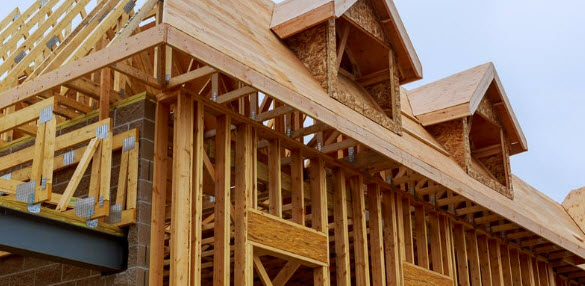Refinancing your home is a powerful way to reduce your monthly payments, pay off your mortgage sooner, or access home equity. However, finding the best home refinance rates is crucial to ensure you maximize the benefits of your refinance. This guide will walk you through how to find the best rates and secure a home refinance loan that meets your financial goals.
Why Refinance Your Home?
Refinancing is essentially taking out a new mortgage to replace your existing one. Homeowners typically choose to refinance to:
- Lower interest rates: When mortgage rates drop, refinancing allows you to take advantage of lower rates, saving money over the life of the loan.
- Shorten the loan term: Switching from a 30-year loan to a 15-year loan can help you build equity faster and reduce overall interest costs.
- Cash-out refinance: If you’ve built up equity, a refinance can provide cash for large expenses like home renovations, debt consolidation, or other investments.
- Change loan type: You may want to switch from an adjustable-rate mortgage (ARM) to a fixed-rate mortgage for more stability in your monthly payments.
How to Find the Best Home Refinance Rates
1. Shop Around with Multiple Lenders
The best way to find competitive home refinance rates is to get quotes from several lenders. Rates can vary significantly between lenders based on your credit score, loan-to-value ratio, and overall financial profile. Online tools can help you compare offers quickly.
2. Check Your Credit Score
Your credit score is one of the most important factors in determining your home refinance loan rate. Higher credit scores qualify for lower rates, while a bad credit score can lead to higher interest costs. If your score has improved since you first got your mortgage, refinancing could offer significant savings.
3. Consider Points and Fees
Lenders may offer lower rates if you pay upfront points. One point equals 1% of your loan amount, and paying points can reduce your interest rate over time. However, be sure to calculate whether the upfront cost makes sense based on how long you plan to stay in your home.
4. Lock in Your Rate
Once you’ve found a favorable rate, ask your lender about locking it in. Interest rates fluctuate daily, so a rate lock ensures your quoted rate is secured, even if the market changes before your closing date.
5. Choose the Right Loan Term
When refinancing, you’ll have the option to choose a loan term. Shorter terms, such as a 15-year loan, often come with lower interest rates compared to 30-year loans. However, the monthly payments will be higher. Weigh the pros and cons to see what aligns with your financial situation.
Current Home Refinance Rates by Loan Type
Here’s a look at the typical home refinance rates based on different loan types and credit scores:
Loan Type | Credit Score 740+ | Credit Score 680–739 | Credit Score Below 680 |
30-Year Fixed | 5.5% | 5.75% | 6.25% |
15-Year Fixed | 4.75% | 5.00% | 5.50% |
Adjustable Rate (ARM) | 5.0% | 5.25% | 5.75% |
Pros and Cons of Refinancing
Pros | Cons |
Lower monthly payments | Closing costs can be high |
Pay off mortgage faster | Extending loan terms increases total interest |
Access cash from home equity | Potential risk of foreclosure if unable to pay |
Factors That Affect Home Refinance Loan Rates
1. Loan-to-Value Ratio (LTV)
Your LTV ratio is calculated by dividing your mortgage balance by your home’s value. Lenders prefer a lower LTV, which indicates less risk. If your LTV is high, you might need to wait until you’ve paid down more of your mortgage or your home’s value increases.
2. Debt-to-Income Ratio (DTI)
Lenders assess your ability to manage monthly payments through your debt-to-income ratio. A lower DTI ratio suggests you’re financially stable, which could help you qualify for better home refinance loan rates.
3. Market Conditions
Mortgage rates fluctuate based on economic factors like inflation, unemployment rates, and Federal Reserve policies. It’s smart to monitor these trends to time your refinance for lower rates.
Leverage how to leverage a home refinance loan through your Home Wealth Blueprint by HomeLoanAdvisor. Access tailored mortgage loan recommendations and personalized wealth strategies with real-time data insights.
How to Apply for a Home Refinance Loan
Step 1: Check Your Current Mortgage Terms
Review your current mortgage terms, interest rate, and payoff timeline. This will give you a benchmark to compare against new offers.
Step 2: Get Prequalified with Multiple Lenders
Reach out to different lenders to get prequalified for a home refinance loan. This process involves a soft credit inquiry and gives you an estimate of the rates and loan terms you may qualify for.
Step 3: Review Loan Offers
Once you have multiple offers, compare them based on interest rates, loan terms, closing costs, and whether you’ll pay any points. Don’t forget to factor in the total cost of the loan over time.
Step 4: Submit Your Application
Once you’ve chosen the best offer, submit a full application. Be prepared to provide documentation, including pay stubs, tax returns, and information about your current mortgage.
Step 5: Close the Loan
After approval, you’ll go through the closing process. Be sure to review all closing costs and fees to avoid surprises.
FAQs
- What is the current average home refinance rate?
As of 2024, the average home refinance rates for a 30-year fixed loan range from 5.5% to 6.25%, depending on credit score and lender. - What factors affect my home refinance rate?
Your credit score, loan-to-value ratio, debt-to-income ratio, and the type of loan all influence your rate. - How much does it cost to refinance a home loan?
Closing costs for a home refinance loan typically range from 2% to 5% of the loan amount, which includes application fees, appraisal fees, and more. - Can I refinance with a bad credit score?
Yes, but you may face higher interest rates. Working on improving your credit score before refinancing can help you secure better terms. - Is it worth refinancing to save 1% on the interest rate?
In many cases, yes. Even a 1% reduction in your interest rate can save you thousands over the life of the loan. - How long does the refinance process take?
The typical refinance process takes 30 to 45 days from start to finish, depending on the lender and your financial situation. - Can I do a cash-out refinance?
Yes, if you have enough equity in your home, you can do a cash-out refinance to access funds for major expenses. - What is a rate lock?
A rate lock guarantees your interest rate for a specified period, typically 30 to 60 days, protecting you from rate fluctuations while your loan is processed. - Can I switch from an ARM to a fixed-rate mortgage?
Yes, refinancing allows you to switch from an adjustable-rate mortgage to a fixed-rate mortgage, providing stability in monthly payments. - What documents do I need to refinance?
You’ll need financial documentation, including pay stubs, tax returns, W-2s, and details about your current mortgage.
Conclusion
Finding the best home refinance loan and securing the lowest home refinance rates can save you thousands over the life of your mortgage. By shopping around, improving your credit score, and understanding market conditions, you can maximize the benefits of refinancing and make sure you’re getting the best deal available.



